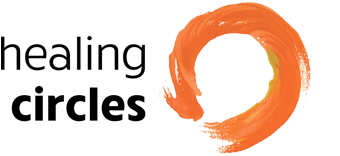Healing Circles for Youth
The Power of Hope (POH) camp came to Commonweal following a conversation that POH co-founder Charlie Murphy and I had in the Fall of 2014 along the Bolinas Beach. We were reflecting on how the land of Commonweal has become a shared sacred place for many communities such as Cancer Help Program alumni or the physicians in Rachel Naomi Remen’s trainings. It was clear to us that it could be a sacred space for teens as well.
Charlie Murphy and Peggy Taylor developed the Power of Hope model at the Whidbey Institute more than 25 years ago. The camp is founded on the principals of the Creative Community Model, which recognizes that, through interactions based in art and creativity, we can support youth development. The camp offers a variety of activities, including an ArtBarn, daily workshops in different art disciplines, and a beach day. One of the core activities is the Heart Circle, which takes place on the fourth day of the eight-day camp.
The heart circle lineage in the POH tradition does not descend from Healing Circles, but is, in essence, the same thing. The young people prepare a special space for the heart circle, include a welcoming ritual as young people enter the space, which is decorated with scarves and branches. The youth sit in a large circle surrounding a beautiful centerpiece, which includes carpets, pillows, and a candle. Two lead staff members sit at one end of the circle, and their role is to hold space and serve as guardians for it.
The youth are instructed to witness their friends’ words. They are to listen—not engage, converse, question, or provide feedback. Just listen. There is no pressure to talk. When people do talk, we ask that they speak from what is on their hearts. At the end of each share, the young person in the middle of the circle can ask the community to sing a line from a song or ask the circle to find a song. At the end of the song, the young person rejoins the circle. And so it continues until everyone who wants to enter the circle has spoken.
This circle takes place in a safe space and a familiar community, allowing teens to drop into their authentic voices. The space is deeply respected. Many young people report that this is the peak experience of the camp, where they can really hear each other speak. Staff members, mostly artists in their twenties and thirties, are often in awe of the depth of the experiences the youth share. The healing qualities of this circle are evident in the sense of reverence and relief that follows it.
When working with youth, it’s critical to consider the community and the space. It’s important that the community is prepped to enter into a healing circle, as this form of sharing and being is not common in most teen settings. Setting clear expectations and boundaries also helps in creating the safety that teens need to share from the heart.
Creating a ritual space—one that is beautifully decorated with natural elements, one that is welcoming and defines the circle space as distinct from the mundane world—is important in developing the container to hold the circle. When done right, the circle can be a transformational space for youth that will leave a kernel of truth and healing that they can carry with them as they grow.



 CC BY-SA 2.0 by IQRemix via Flickr
CC BY-SA 2.0 by IQRemix via Flickr